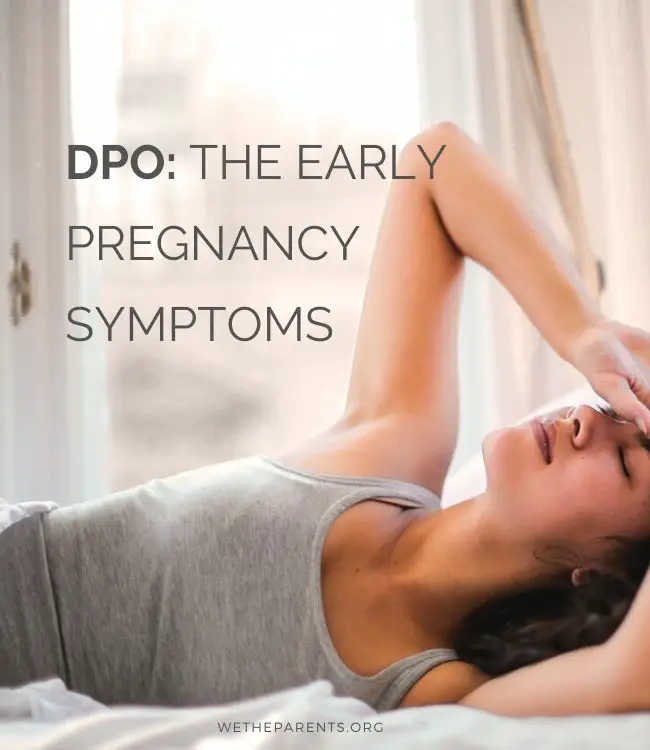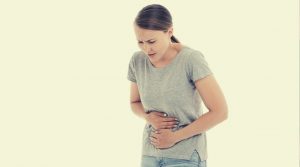Most women are familiar with the common signs of early pregnancy. Morning sickness and food aversions are so inextricably linked to indicating pregnancy that some women may find themselves the target of “suspicion” simply for mentioning their presence.
If you’re trying to conceive, you’re no doubt even more familiar with these first indicators of conception. Most pregnant women begin to present symptoms between 2 and 3 weeks into their pregnancy, but those on the journey toward conception may be looking for indicators that can appear sooner than that.
These indicators are called DPO symptoms. DPO refers to the days past ovulation, generally encompassing the days within a two-week span post-ovulation and conception.
Understanding and recognizing the presence of DPO symptoms is easier when you understand exactly how your menstrual cycle works.
An in-depth look at your menstrual cycle
Though most of us are basically familiar with the way our menstrual cycle works, certain details, such as the timing of hormone release and how to track the window in which conception is possible, aren’t usually addressed in most health classes.
Taking a closer look at the way your menstrual cycle operates can help you gain a better understanding of when to look for DPO pregnancy symptoms.
- Proliferative stage. This stage occurs after the “end” and before the “beginning” of your ongoing cycle, acting as a natural reboot which overlaps the preceding follicular stage. During this time, your pituitary gland, which is your body’s primary hormone regulator, releases a hormone which stimulates your ovarian follicles to trigger the release of eggs within the ovary. These follicles, also called corpus luteum cells, then release a group of about 15 to 20 eggs as well as a burst of estrogen. This estrogen triggers the thickening of your uterine lining, which is intended to create an environment where an egg can safely implant, if one is successfully fertilized.1Menstrual Cycle Proliferative And Follicular Phase
ncbi.nlm.nih.gov - Follicular stage. This stage marks the technical “beginning” of your cycle and lasts, approximately, two weeks. At this time, your key reproductive hormones, which are estrogen and progesterone, are at the lowest point in your cycle — their rising as your cycle progresses. The estrogen released during the proliferative stage is now working its magic in your womb and thickening the lining; toward the end of the follicular stage, that same gradual rise in estrogen will trigger the release of the luteinizing hormone, the hormone which is tracked by ovulation prediction tests. When your corpus luteum cells (egg follicles) receive luteinizing hormones, ovulation is triggered, and your largest egg — or eggs — release from the ovary to the fallopian tube.2Menstrual Cycle Proliferative And Follicular Phase
ncbi.nlm.nih.gov - Ovulation stage. At this time, your body is actively preparing to become pregnant, or menstruate, depending on what happens during the next few days. Both your estrogen and progesterone levels are on the rise, and your cervical mucus is altering itself to play a more effective role in conception, becoming stretchy, translucent, and thin; this is more accommodating to incoming sperm. About two weeks into your cycle, when ovulation occurs, the egg, or eggs, which have been released from your ovary will travel through your fallopian tube and into your uterus. The presence of viable sperm anywhere on this journey could lead to a fertilized egg. This is a very brief window of time, which spans from approximately half a day to a day, and it can be easy to miss. That said, sperm are tough to kill and can survive (and fertilize an egg) within your body for about five days. This is one reason the rhythm method of preventing pregnancy can sometimes prove ineffective.3Normal Menstrual Cycle and the Control of Ovulation
ncbi.nlm.nih.gov - Luteal stage. The penultimate moment in conception; during the luteal phase, your corpus luteum cells, otherwise known as the follicles which released your egg(s), begin to release progesterone, rather than estrogen. This works to soften the lining of your womb, creating an environment in the uterus that accommodates implantation. Even if an egg has been fertilized, it can take between six and twelve days for implantation to be complete. Progesterone levels continue to rise during this time. If implantation has occurred during your luteal stage, a new hormone will quickly make its way into the mix. This one’s called human chorionic gonadotropin, abbreviated as hCG, and is the hormone that triggers a positive pregnancy test. If no hCG is detected, the corpus luteum cells shrink up, and the levels of progesterone and estrogen in your body drop. This begins the initiation of menstruation, or the shedding of this softened uterine lining, which is again followed by the proliferative stage as your cycle begins anew.4Normal Menstrual Cycle and the Control of Ovulation
ncbi.nlm.nih.gov
DPO: The early pregnancy symptoms
Now that you’ve taken an in-depth look at how your cycle works, you can understand that the possible outcomes of your menstrual cycle diverge during the luteal phase, depending on whether or not fertilization and implantation occur.
There are certain symptoms that women can look to during this time as potential indicators of pregnancy, though, having said that, every woman is different.
That many of these symptoms can be associated with either premenstrual syndrome or early pregnancy can create even more confusion from the process.
Bearing this in mind, take a closer look at the most common DPO pregnancy symptoms, in order of the dates they occur, to get a better idea of what to expect. You may even notice small changes just one day past ovulation.
One day past ovulation
- Breast and nipple tenderness: Sore breasts and nipples are an extremely common symptom of early pregnancy, as blood flow increases to this area to prepare your body for eventual nursing. This soreness can also be linked to your time of ovulation in general, but tends to be more pronounced when caused by pregnancy. 5Do Sore Boobs Mean I’m Pregnant? Plus, Why This Happens
healthline.com - It’s a symptom that can make life difficult and uncomfortable for a while, especially if you’re working with a large bustline. Maternity and sports bras that offer support with wide bands and straps are available to relieve your discomfort.
5 days past ovulation
- Problems with emotional regulation: It’s hard not to notice that hormones can bring mood swings depending on the day and situation, but, as with tenderness, these can also be linked with an oncoming period. Though it can be tough feeling on top of the world one moment, then crying into your Wheaties the next, staying aware of how many days beyond ovulation you are can put things back into context. If you’re weepy between one and four days beyond ovulation, you’re probably getting your period. If it’s happening after day five, it could be either, but the possibility of pregnancy should now be considered. Pregnancy mood swings
- Feeling dizzy. Though it’s not as commonly associated with early pregnancy as hormonal mood swings and morning sickness, dizziness is something many pregnant women experience, and it can happen as soon as five days past ovulation. 6Dizziness in early pregnancy
healthline.com
More often than not, dizziness is triggered by low blood pressure or sugar, caused by the need for a more sufficient or nutritious diet. It can also be associated with hormonal changes. Dizzy spells may come and go, but aren’t necessarily a pregnancy symptom; most women who struggle with dizzy spells find them gone by the time their first trimester has ended.
6 days past ovulation
- Uterine cramping: This symptom can naturally lead to confusion, or disappointment, in women trying to conceive, but a cramping sensation similar to menstruation is common in early pregnancy. Your womb is expanding and preparing for the growth of a child, causing sensations that feel close to those caused by your period, including pressure and small, sharp pains. These cramps are associated with implantation of a blastocyst, or fertilized egg, and can happen as soon as 6 days of ovulation.74 Days Past Ovulation
There’s no need to contact your OB-GYN unless the pain is unusually severe, or you’ve tested positive for pregnancy and are bleeding heavily, or are experiencing light bleeding for more than a day. - Spotting and/or bleeding: Again, this is a symptom that can be a cause of some concern (or disappointment) for women trying to conceive, though it can also indicate that a fertilized egg has implanted in the wall of your uterus. Light to moderate spotting or bleeding, called implantation bleeding, can appear when this happens, and generally lasts for between 12 and 24 hours. This can occur between 6 and 12 days past ovulation.8Is implantation bleeding normal in early pregnancy?
mayoclinic.org
If you’re detecting hCG via tests, and are concerned about this bleeding, a trip to your doctor could offer some peace of mind.
Though this can be an indicator of miscarriage or ectopic pregnancy, the latter is fairly rare, and back-to-back blood tests to detect increases in hCG could serve to reassure you and your doctor that everything is okay.
9 days past ovulation
- Increased rate of urination: Your mother and grandmother may have warned you about the number of times you’d find yourself running to the potty once you were with child, but you probably envisioned the cause as a several-pound baby sitting firmly on your bladder. Though that certainly doesn’t help, increased urination can begin as soon as 9 days past ovulation. Hormones associated with your pregnancy increase the blood flow throughout your body, including your kidneys, which, in turn, makes your bladder fill up faster. The total volume of blood in your body also increases during pregnancy, meaning more blood is passing through your kidneys, resulting in more waste and a fuller bladder. We’d love to tell you this symptom will ease off soon, but moms don’t get much relief from this increased need for bathroom time till after the baby arrives.
- Sudden super-smelling: Although science continues to puzzle over the exact hormonal cause of this symptom, many pregnant women experience a sudden sensitivity to smells that can occur as soon as 9 days past ovulation. 9Cameron, E. L. (2014). Pregnancy and olfaction: a review. Frontiers in psychology, 5, 67.
ncbi.nlm.nih.gov . This can, unfortunately, lead to morning sickness, as strong smells like coffee and fried food, even if previously enjoyed, may trigger bouts of intense nausea and vomiting.
10 days past ovulation
- Feeling extra exhausted: Pregnancy is physically exhausting to be sure — not only are you carrying the extra weight of your baby and your increased blood volume, but your energy and nutrients are being put toward the growth of your baby with little left for you. Intense exhaustion, arising as early as 10 days past ovulation, is common, so sleep whenever you can as the extra rest won’t do you any harm at all. 10Symptoms of pregnancy: What happens first
mayoclinic.org - Morning sickness and food aversions: Though some women struggle with severe morning sickness (called hyperemesis gravidarum) throughout their pregnancy, most move past these unpleasant feelings of nausea and occasional vomiting by the second trimester if, indeed, they’re ever felt at all. It remains one of the most common pregnancy symptoms, and can happen as soon as 10 days past ovulation. 11 Alley, N. M. (1984). Morning Sickness The Client’s Perspective. Journal of Obstetric, Gynecologic, & Neonatal Nursing, 13(3), 185-189.
healthline.com
Though it can occur at any time of the day continually, it shows no particular preference to morning, and, as such, has been given something of a misnomer! Less fortunate women can experience it all day long in early pregnancy. Though the exact scientific cause is unclear, it may be related to an increased sense of smell and scent aversions, as well as increased progesterone which may give rise to a sluggish gut and indigestion. - A boost in appetite: You may be surprised at just how soon your body will let you know you’re eating for two. In fact, you may alternate between feeling extremely hungry and extremely sick, and craving things that are far outside your usual wheelhouse isn’t an unusual occurrence for this particular time! Cravings can be triggered by hormones, but can also be caused by your body letting you know it requires a certain nutrient — good prenatal vitamins can do wonders in abating so-called “weird” cravings.
- Increased cup size: Whether you’re excited about this natural increase to your bustline, or simply dealing with it as yet another pregnancy symptom, it’s one that’s virtually unavoidable. In fact, you may find yourself having grown a full cup size or more by the time your first trimester ends! Though soreness can begin sooner, you may note physical changes to your breasts as soon as ten days past ovulation.12Samra, K. A. (2013). The eye and visual system in pregnancy, what to expect? An in-depth review. Oman journal of ophthalmology, 6(2), 87.
healthline.comThey generally won’t return to their original size until you’ve finished breastfeeding. The development of stretch marks and visible blue veins during this time is perfectly normal, as these veins indicate the increased blood flow needed to prepare your body to eventually nurse.
Our final word on DPO symptoms
As we’ve established, there are a number of potential early indicators of pregnancy, and at least one can happen as soon as a single day past ovulation.
Of course, a test to detect hCG in your urine is your best bet for a solid early indicator of pregnancy, while having a deeper knowledge of what your body is doing (and when) can make the appearance of symptoms easier to understand.
As always, it’s best to seek the guidance of your doctor or OB-GYN while trying to conceive or to help make an official determination of pregnancy.





